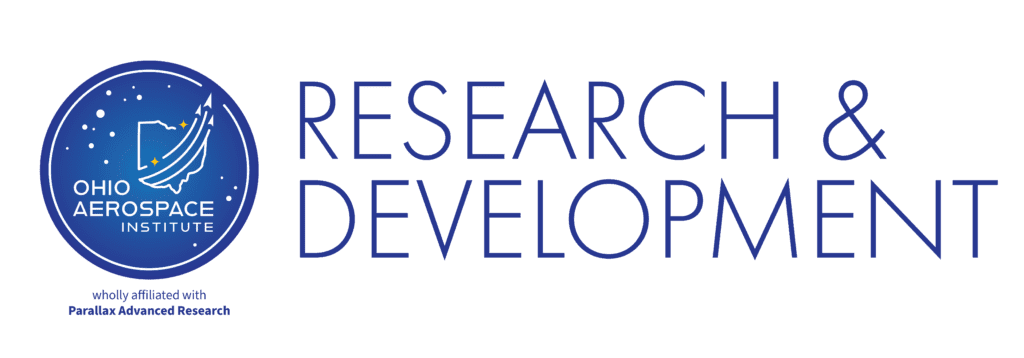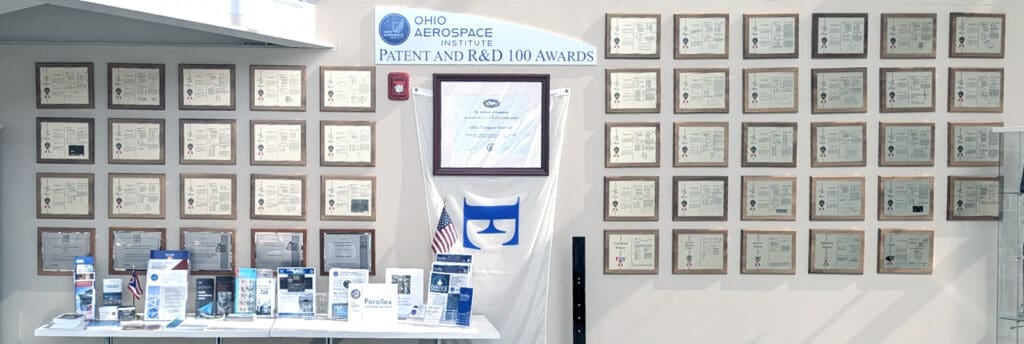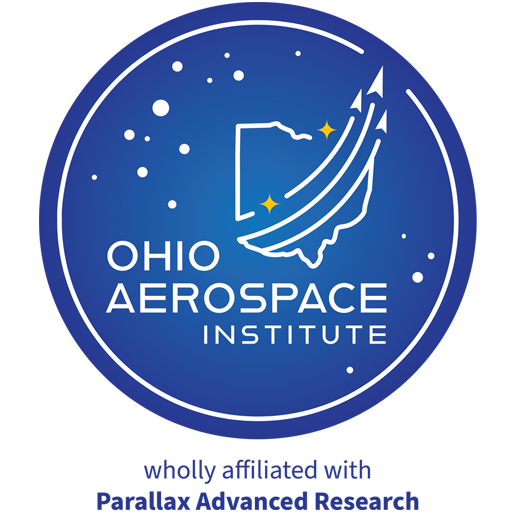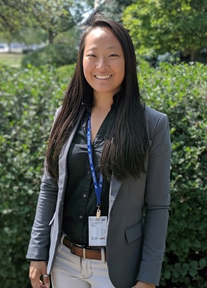Aerospace Research: OAI’s role in Advancing Technology for over 35 years

The Ohio Aerospace Institute (OAI) has provided our customers research expertise for more than 35 years. During this time, we have earned over 100 prestigious awards from international professional societies, federal agencies, universities worldwide, and other institutions. Our research and development team has published more than 1,000 peer-reviewed articles, textbooks, and technical chapters, served as program chairs for major conferences, edited books and proceedings, and participated on numerous boards for international journals, trade magazines, planning committees, and engineering standards organizations. We represent reputable experts and core competencies at the NASA Glenn Research Center (GRC) in Cleveland, and the Air Force Research Laboratory (AFRL) in Dayton. To punctuate these accomplishments, a wall at our headquarters features plaques representing many of these awards along with our numerous domestic and international patents. research and development team has published more than 1,000 peer-reviewed articles, textbooks, and technical chapters, served as program chairs for major conferences, edited books and proceedings, and participated on numerous boards for international journals, trade magazines, planning committees, and engineering standards organizations. We represent reputable experts and core competencies throughout key research institutions. To punctuate these accomplishments, a wall at our headquarters features plaques representing many of these awards along with our numerous domestic and international patents.

Current Research Focus
Currently, OAI scientists support research contracts focused on a variety of cutting-edge technologies, including advanced materials, aircraft icing, electronics;, deep space propulsion systems; and computational fluid dynamics.
OAI also serves as the programmatic and technical lead for several consortia, bridging prime contractors, government agencies, small companies, and universities to collaboratively solve common technical challenges. These efforts mainly relate to turbine engines and include aeroacoustics, distributed engine controls, propulsion system instrumentation, environmentally friendly fire suppressants, probabilistic design methodologies, and additive manufacturing. The latest high-profile effort that OAI is leading is The Digital, Research, Innovation, Validation and Experimentation (D.R.I.V.E.) consortium, which focuses on the overall digital transformation of the Air Force. The scope of this consortium is intentionally broad, with the goal of touching every aspect of the Air Force value chain.
Our team is well positioned to address many promising advancements in aerospace research today. The particular areas, which are garnering much interest and investment from both government and industry, are documented in roadmaps authored by professional engineering societies and government agencies.
As director of research and chief scientist at OAI, Dr. Andrew Gyekenyesi maintains awareness of these trends, ensuring partnerships and connections are made between the various research teams. This collaboration benefits all partners by leveraging all current and future activities, avoiding duplicate efforts and optimizing teams for future pursuits.
Collaboration in Aerospace Research
Aerospace research is inherently interdisciplinary, requiring partnerships among internal teams, industry, government, and academia. Our researchers take on leadership roles in professional science and engineering societies, contributing their expertise and forging new collaborations.
OAI is also recognized for managing consortia. Government agencies and industry frequently reach out for assistance in initiating and managing public-private partnerships. Due to our history of success, OAI is viewed as a neutral, trusted organization with the skills to manage complex research initiatives and effectively handle collaboratively developed intellectual property.
Addressing Sustainability Challenges
Sustainability and environmental impact are increasingly important in aerospace, and our research focuses on addressing key technology gaps, including thermal management of batteries and the effects of icing on advanced air mobility vehicles. Liquid hydrogen is widely considered the most viable future option for sustainable aviation due to its high energy density. We are also assessing workforce needs and curriculum development for the emerging hydrogen economy, incorporating insights from companies involved in hydrogen production, transport, storage, and use.
The Future in Aerospace Technology
When looking ahead at the future in aerospace technology, we will see a variety of disruptors in the coming decades. Some emerging technologies are at an early stage, creating opportunities for research partnerships and supply chain involvement.
Smaller, less traditional aerospace companies are leading many of these efforts in advancing aviation and space systems. Organizations like OAI must stay informed on these developments, actively engaging with industry while maintaining technical capabilities to support new opportunities.
Development time and costs for aerospace systems have risen due to increased complexity and certification requirements. Digitization and artificial intelligence are expected to streamline this process, reducing testing requirements and enabling model-based certification.
Advanced air mobility vehicles will soon enter commercial operation. This evolution will begin with battery-powered flights, followed by hydrogen fuel cells for longer-duration flights, and ultimately full autonomy. Similarly, electric propulsion is already being tested in general aviation prototypes. By the end of the decade, small commuter aircraft may operate entirely on electric power, progressing from batteries to hydrogen fuel cells. Turbine-based engines will remain in use for long-haul flights, incorporating sustainable fuels and efficiency-enhancing technologies.
Current turbine research programs are focused on new materials, low-carbon fuels, hybrid propulsion systems, smaller and more efficient engine cores, and open turbofans. Researchers are also exploring innovative airframe designs, such as transonic truss-braced wings, blended wings, morphing wings, distributed propulsion systems, and commercial supersonic aircraft with design strategies for reducing sonic booms. Much research is also being focused on hypersonic systems as our adversaries have already started implementing such systems.
There are also many upcoming opportunities in space, as government agencies are increasingly relying on commercial innovation for space exploration and commerce. This includes funding private launch systems, lunar landers, and space stations. As the aerospace innovation advances, OAI will continue to contribute to these cutting-edge developments.
To learn more and inquire about research services, please contact Dr. Andrew Gyekenyesi, Director of Research/Chief Scientist.
Andrew.Gyekenyesi@parallaxresearch.org

Dr. Andrew Gyekenyesi is the Director of Research and Chief Scientist at the Ohio Aerospace Institute in Cleveland, Ohio. His current responsibilities include the oversight of OAI’s sponsored aerospace research; directing consortia and other teaming activities; conducting sponsored research and program management; business development; and monitoring OAI’s workforce development efforts. Dr. Gyekenyesi has over 35 years of experience in the fields of material development, mechanics of materials, advanced inspection and structural health monitoring techniques, and thermal management.
###
About Parallax Advanced Research & The Ohio Aerospace Institute
Parallax Advanced Research is a 501(c)(3) private nonprofit research institute that tackles global challenges through strategic partnerships with government, industry, and academia. It accelerates innovation, addresses critical global issues, and develops groundbreaking ideas with its partners. With offices in Ohio and Virginia, Parallax aims to deliver new solutions and speed them to market. In 2023, Parallax and the Ohio Aerospace Institute formed a collaborative affiliation to drive innovation and technological advancements in Ohio and for the nation. The Ohio Aerospace Institute plays a pivotal role in advancing the aerospace industry in Ohio and the nation by fostering collaborations between universities, aerospace industries, and government organizations, and managing aerospace research, education, and workforce development projects. More information on both organizations can be found at Parallax and OAI websites.





 Colleen K. Unsworth
Colleen K. Unsworth